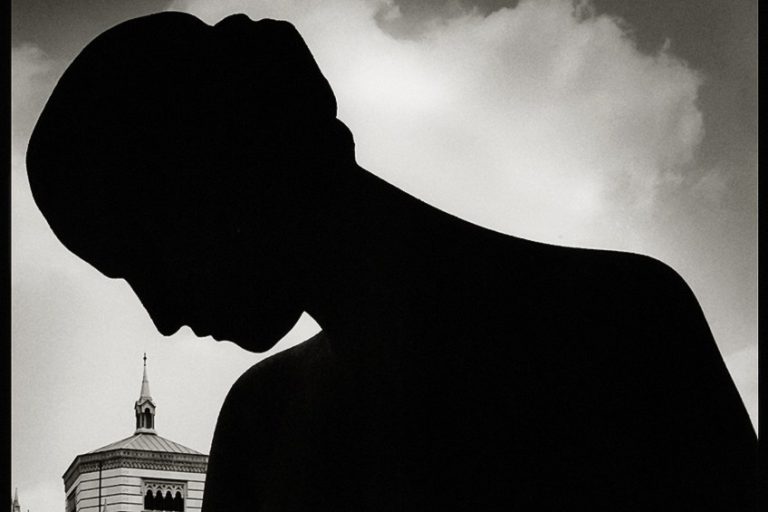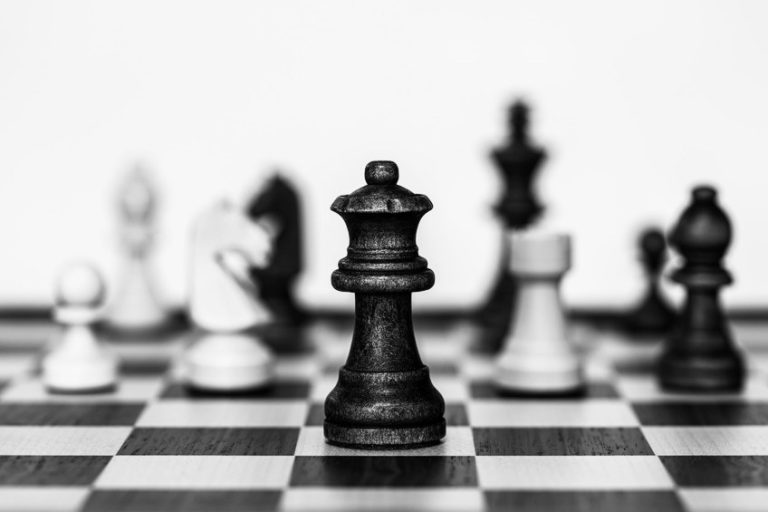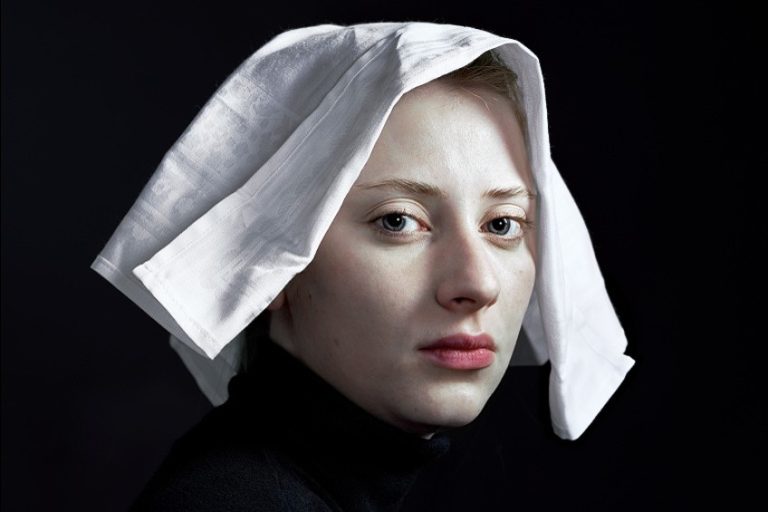Architectural Photography – What Is Architecture Photography?
What is architecture photography and what does an architectural photographer do? Architectural photography is all about taking photos of buildings, both inside and outside. Architecture photographers are required to spend a lot of time finding the perfect angle from which to take their photos, but this field of photography may not be as dynamic as other types. Let’s learn more about architectural photos and architectural photography in the article below.
What Is Architecture Photography?
While architectural photographers do not need cameras that capture quick movement, they do need to be of very high quality. Architectural photography started in the 1870s when prominent architectural photographer Albert Levy started taking pictures of older structures. Later, the American mid-century modernist Julius Shulman captured modern architecture.
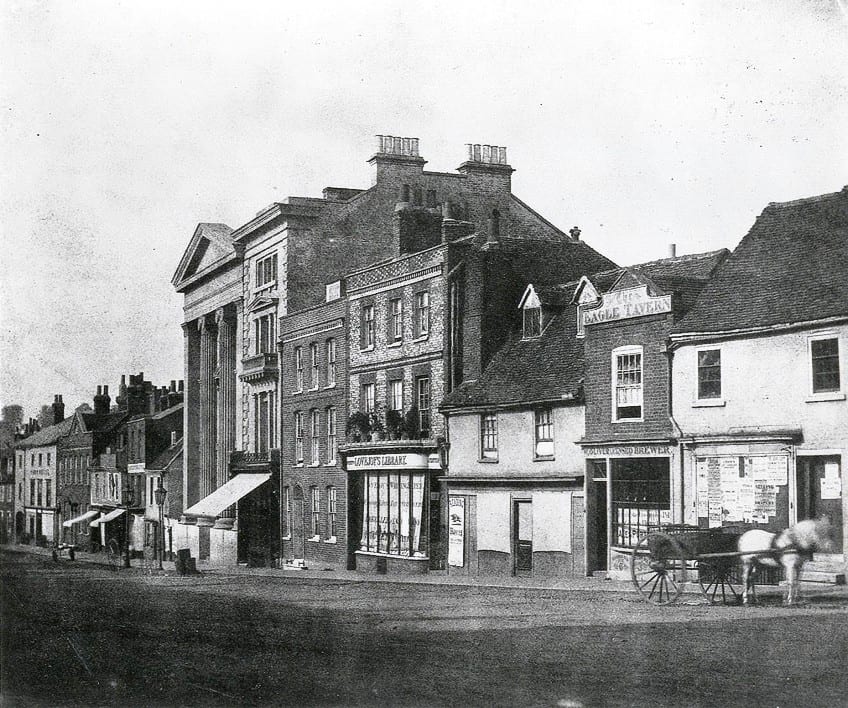
Today, architecture photographers have a variety of different styles of architecture photography to choose from. They also have a wide range of techniques to choose from that allow them to capture buildings in their best light. Let us begin by looking at the various types of architectural photography there are.
Types of Architecture Photography
While you might assume that architectural photos are all alike, there are actually several types of architecture photography available to architecture photographers. These types include interior, exterior, cityscape, and aerial photography.
Below, we will look at the differences between these types of architectural photos.
Interior Architecture Photography
Interior architectural photography focuses on capturing photos of interior spaces within structures and buildings. Taking pictures of the layout, design, and features of diverse interior spaces, such as private residences, workplaces, hotels, museums, restaurants, and other architectural buildings, is all part of interior architectural photography. It necessitates a keen awareness of lighting, composition, and conveying the essence of the design features.
The architectural photographer attempts to showcase the space’s architectural characteristics, textures, materials, colors, and overall ambiance.
The architecture photographer may use various techniques that accurately portray the impression of depth, space, and perspective of the interior space. This entails precise positioning, the use of wide-angle lenses to capture a larger picture, and the use of straight lines and perfect vertical alignment in the final photos. This type of photography can often be challenging since there is restricted light available within the confines of a building. As a result, additional lighting is necessary to accurately depict the interiors.

Proper lighting techniques assist in emphasizing architectural details, accentuating important components, and creating a nice ambiance in their architectural photos.
Exterior Architecture Photography
Exterior architectural photography focuses on taking photos of external facades. This involves taking pictures of the outer surfaces of various structures, such as bridges, buildings, monuments, landmarks, and other architectural elements. The purpose of external architectural photography is to draw attention to the building’s design, magnitude, aesthetics, and contextual interaction within its surroundings. The architecture photographer’s goal is to convey the exterior’s architectural characteristics, lines, forms, materials, textures, and general visual impact.
Composition is critical in exterior architectural photography for creating aesthetically appealing architectural photos.
The architectural photographer meticulously chooses angles, views, and framing techniques that emphasize the building’s distinctive features. To create a feeling of balance, they can emphasize symmetry, patterns, or other architectural characteristics that define the particular building. Another significant aspect of exterior architectural photography is lighting. Architecture photographers typically schedule their sessions around the ideal lighting conditions, such as golden hour, when the light is pleasant and soft, and produces long shadows.
Cityscape Architectural Photography
Capturing photos of urban cityscapes while highlighting the various building’s architectural characteristics inside a city is what differentiates cityscape architectural photography. The purpose of cityscape architectural photography is to show off a city’s distinct character, architecture, and urban planning. It entails portraying the majesty and splendor of the cityscape by showcasing the prominent buildings, bridges, and public areas of a specific urban area.
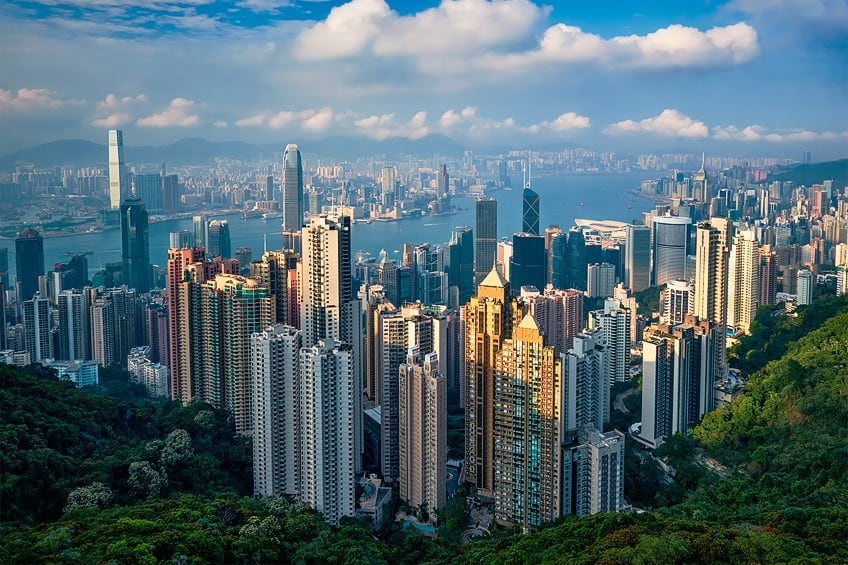
Travel magazines, city guides, tourist marketing, and architectural portfolios regularly use cityscape architecture photography. It helps visitors appreciate a city’s architecture and urban fabric while also promoting and celebrating the distinctive aspects of various urban areas.
Aerial Architectural Photography
Architectural aerial photography is a type of photography in which photos of architectural designs are captured from a higher vantage point, typically utilizing an airplane or drone. It offers a unique viewpoint and enables the capture of large-scale architectural features, urban landscapes, and the interplay between structures and the environment from a high vantage point. Aerial photography has a particular benefit in that it offers a perspective that is not easily available from the ground.
It enables the capture of the grandeur and complexities of architectural projects such as large-scale buildings, stadiums, bridges, and other structures best admired from above.
To capture appealing photos, architectural aerial photographers utilize a variety of technologies and approaches. Drones with high-resolution cameras have become popular because they offer flexibility, mobility, and the ability to record precise aerial photos. Man-powered aircraft or helicopters may be used in some circumstances to capture photos from greater altitudes or for specialized aerial photography projects.
Techniques for Capturing Architecture Photos
As with any type of photography, architectural photography has its own set of techniques that enable photographers to capture the best possible photos. These include composition, framing, and lighting. Below, we will explore these in greater detail. Finding the ideal perspective in architectural photography is essential for highlighting the distinctive elements and design of a building. Experiment with many different viewpoints to find the most visually attractive and fascinating angles. Consider filming from low, high, or even unusual angles to create visual interest and present the architecture in a new and appealing way.

Framing and Composition
Architecture photography relies heavily on composition. To produce a balanced and aesthetically appealing picture, pay close attention to the positioning and arrangement of items within the frame. In order to direct the viewer’s eye and create an impression of harmony, using approaches such as the rule of thirds and symmetry.
Keep distracting things to a minimum and aim to arrange the subject in a way that accentuates its architectural beauty.
Light and Shadows
Lighting is also extremely important in architectural photography. To accentuate the textures, contours, and features of the architecture, pay particular attention to the hue and direction of light. Play around with a range of different lighting settings to establish the appropriate mood and ambiance, such as natural light or artificial lighting. Also, be conscious of the architectural shadows and use them imaginatively to create depth and complexity in the image.
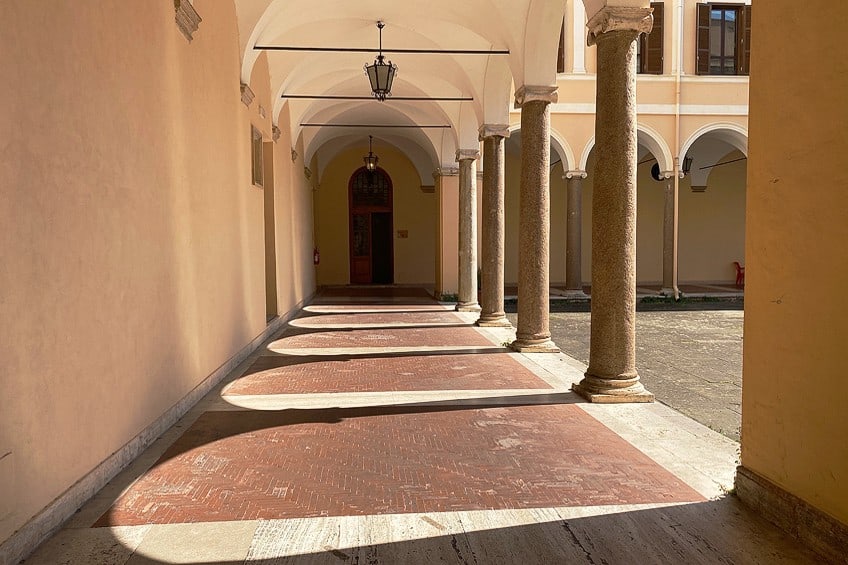
Reflections and Water
You don’t need to just capture the building, you can also use the surroundings to enhance your photo. Incorporate reflective surfaces or bodies of water around the architecture into your architectural photos. Reflections can create a unique visual element by catching the reflection of the structure and its immediate surroundings.
In order to create a captivating composition, pay close attention to the location and direction from which you catch the reflection.
Capturing Motion
Architecture photography does not have to be static all of the time. Think about including aspects of motion in your photographs to enhance the dynamism of your photos. Capturing people strolling by, cars in motion, or even integrating long exposures to produce light trails are all examples of this. Experiment with multiple techniques to capture the energy and vibrancy of the architecture and its surroundings. Remember that perfecting these shooting methods takes time and practice.

Various Creative Approaches to Try
While we have mentioned a few of the most significant techniques to utilize above, they are by no means the only things you can do to make engaging architectural photos. There are many other creative approaches that will make your architecture photography stand out from the rest.
Let’s begin with the concept of minimalism and simplicity in architecture photography.
Minimalism and Simplicity
In architectural photography, minimalism means focusing on uncluttered compositions while minimizing visual aspects to their essential forms. Look for structures with straight, clear lines or simple geometrical shapes. These can be accentuated by carefully arranging your photo to highlight the design’s symmetry. Look for things with strong lines, such as windows, walls, or columns. To make the building the point of focus in the photo, keep the composition clear of excessive visual clutter.

To draw people’s attention to the design elements and textures, consider utilizing a limited color palette. Also, embrace negative space in your photos! By carefully using negative space, you can establish a feeling of balance. Minimalism does not imply removing all details. Instead, concentrate on portraying the architecture’s fundamental and subtle elements. Take note of textures, patterns, and distinctive aspects that provide visual interest in your photos without overpowering the composition’s simplicity.
Abstract Techniques
Pushing the boundaries of standard representation and pursuing unique and unorthodox means of photographing architectural topics are central to abstract techniques in architectural photography. Within the construction of buildings, look for patterns, repeated shapes, and abstract forms. These may be found in small features like windows, doors, and stairs, as well as in the overall architecture of the structure. Work on capturing these aspects in a way that highlights their abstract features. Explore uncommon angles to photograph architecture in a unique and surprising way.
Breaking away from traditional views allows you to produce photographs that push the viewer’s perception and provide a fresh perspective on the buildings you wish to capture.
Try to find reflections and distortions in architectural surfaces or their surroundings. Incorporate reflecting elements such as glass or water to create abstract and dream-like visions of buildings. To incorporate distinct architectural components or to overlay various textures and patterns, employ multiple exposures or double exposures. This creative approach can result in complex and multilayered compositions producing unique interpretations of the architecture.
HDR and Panoramic Photography
High Dynamic Range photography involves photographing many exposures of a scene and combining them in order to produce a balanced image with a variety of tonal details. This approach is very beneficial for capturing the complete dynamic range of light and shadow in architectural photography. Furthermore, panoramic photography enables you to take pictures of big buildings and huge landscapes by stitching together many photographs.

Black and White Architectural Photography
Producing black and white architectural photos is a classic and effective technique for emphasizing the shapes, textures, and contrasts found in architectural topics. By eliminating color from the picture, the architectural photographer is able to concentrate on the architecture’s intrinsic beauty and aesthetic components.
Take note of how light and shadow interact, as well as the distinctions between various surfaces and materials. These characteristics can be amplified in black and white to create aesthetically appealing compositions.
The capacity of black and white photography to express atmosphere and elicit emotions is undeniable. The absence of color sometimes provides architectural photographs with a feeling of timelessness, sophistication, and drama. To achieve the ideal mood and ambiance in your images, experiment with different tone ranges, contrasts, and lighting situations.
Incorporating Animals and People
Including a human or a pet in the composition helps to convey a feeling of scale, and emphasize the architecture’s vastness and majesty. It can highlight the size of a building by contrasting it with a human figure. This lends depth and meaning to your images by creating a captivating visual contrast. Including individuals in architectural photos may give the scene more life. Try capturing people doing everyday things like walking or engaging with the building.
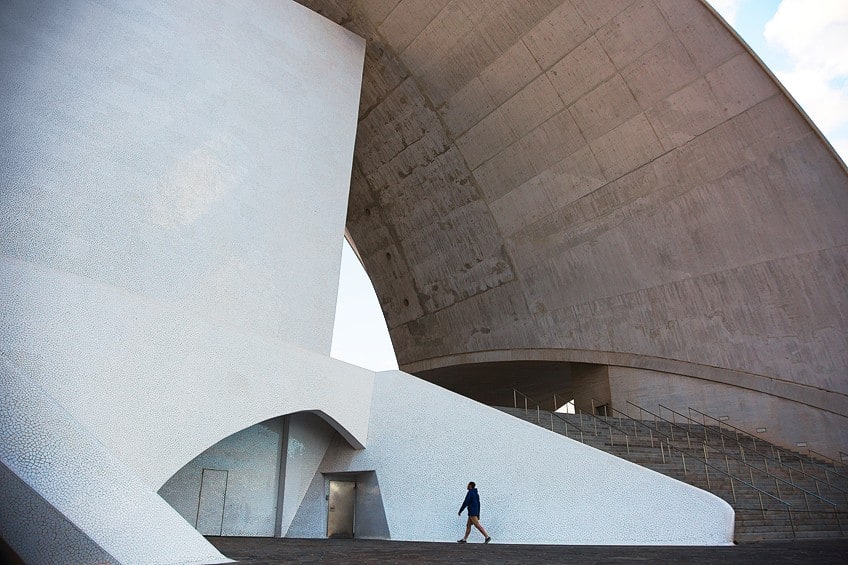
This not only provides realism to the composition but also conveys a story about human interaction with the built world. You can potentially stir up emotions and produce a more compelling and relatable photo by recording these interactions. People and animals can additionally be used as focal points inside the frame. Their motions, gestures, and attitudes can combine to create a dynamic focal point that captures the attention of the viewer. You can try experimenting with various compositions and subject locations inside the frame to achieve a visually pleasing and balanced photograph.
Ethics in Architectural Photography
As with any type of photography, it is essential that you practice a certain amount of consideration when taking photographs. This is particularly relevant when taking photos of someone else’s private property.
Here is a guide of things to keep in mind to make sure that you are being a responsible architecture photographer.
The Rights of Private Residences
Before taking photographs of any buildings, particularly private places, it is important to seek permission and authorization from the property owner, renters, or inhabitants. This is particularly crucial if you intend to shoot inside spaces or places not open to the public. Any guidelines or limits imposed by the property owners or regulatory bodies must be followed. Inform the property owners or residents of your intentions for shooting the buildings. Indicate if the photographs will be used for personal, journalistic, or commercial purposes.
Transparency and open dialogue help to establish confidence and assist in ensuring that everybody involved is aware of the photo’s purpose.

When taking photographs of buildings, keep people’s privacy and personal space in mind. Avoid taking pictures that trespass on private spaces or places without permission. If people appear in your images, respect their privacy by getting permission if they are identifiable and their presence is an important aspect of the composition. Avoid recording and distributing details that might jeopardize the property owners’ or tenants’ safety or security.
Following Safety Guidelines and Regulations
Before beginning any photographic project, become acquainted with the safety standards and requirements unique to the site or environment in which you will be working. This involves knowing the regulations for public venues, construction sites, and restricted locations. Different locations or territories may have different safety rules, therefore it’s essential to find out and adhere to them. Keep an eye out for signs and obstacles indicating prohibited areas or potential hazards. Accessing or photographing locations that are off-limits or represent a safety concern should be avoided.
Following these guidelines assures your safety as well as the integrity of the architectural buildings you are shooting.
Alteration of Images
Maintain the authenticity of your images by avoiding excessive photographic manipulation. While post-processing is a common strategy for improving and refining photographs, be open about any changes executed and avoid misrepresenting the architecture’s original design. Misleading depictions can be unethical and deceive viewers.

Examine the intended function or context of your architectural photos and make sure they correspond with the architecture’s aims and aspirations. If you wish to use your photographs for commercial or promotional purposes, make sure they appropriately depict the architecture and follow any branding or marketing restrictions.
Cultural Sensitivity
Take the time to investigate and fully understand the cultural context in which the architectural buildings that you want to photograph exist before shooting them. Learn about the architectural and community’s social, historical, and cultural significance. This information will assist you in approaching your photography with kindness and respect. Different cultures and societies may have different practices, traditions, or norms surrounding architectural photography. Respect these traditions and adhere to any laws or restrictions in place.
Seek advice from locals or officials to make sure that your photography is sensitive to the cultural standards and values of the region you are in. Some architectural buildings may have religious significance and so be regarded as sanctified locations.
When shooting such locations, be very mindful of religious acts, rituals, and customs. Avoid any acts or behaviors that might be considered rude or disruptive. Dress responsibly and follow any photography policies in religious settings. Certain buildings may be recognized as cultural heritage sites, which are legally protected. Observe and follow any limits or rules put in place to protect these sites. Avoid behaviors that might harm, degrade, or insult the architecture or its surroundings.
Proper Attribution
It is important to give credit to the architectural company that created the design when uploading or publishing your architectural photos. Add their name and any other information that indicates their contribution to the creation of the architecture. This acknowledgment serves as an acknowledgment of their innovative and professional efforts.
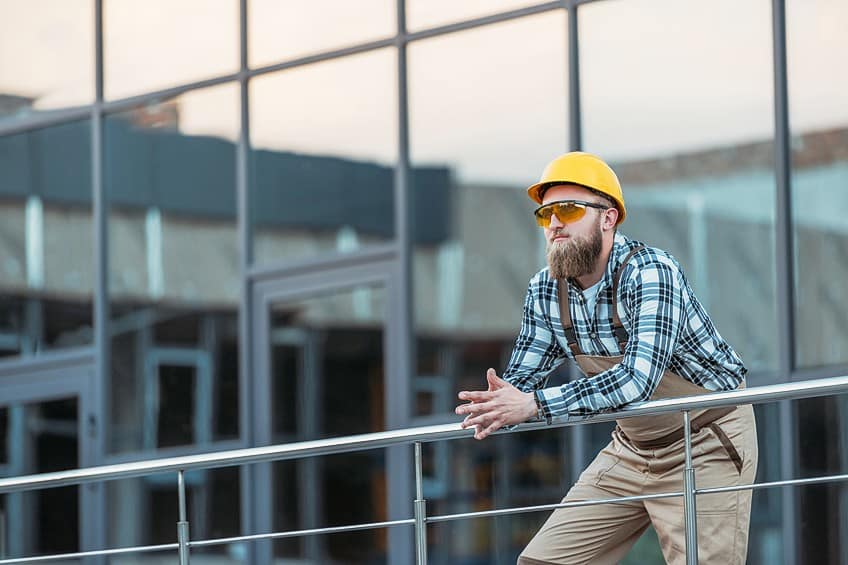
Additional individuals or teams may be engaged in the implementation of the building’s design in addition to the architect. Interior designers, Landscape architects, structural engineers, and others may also be included. Give recognition to these people or teams wherever possible, as their skills and contributions impact the architecture’s final outcome.
That wraps up this article on architectural photography. Once you’ve decided on a building or structure to photograph, you should spend some time getting to know it. Begin by just going around the outside of the building and, if possible, investigate the inside. Consider conducting some studies on the structure and its history as well. Discover how it was made and how it has been utilized. All of this information could help guide your architectural photographs and select what type of design you want to accomplish.
Frequently Asked Questions
What Is Architectural Photography?
In general, architecture photography refers to photography that focuses on buildings. It can involve photographing the outside and interiors of buildings, as well as bridges, other structures, and urban environments. Many photographers capture breathtaking architectural photos. Some do it as a hobby, while others make a living by shooting for customers such as design companies, advertising agencies, and periodicals. While it may be fun to take photos of buildings, it is important to respect the privacy of the people living in the buildings and get permission to take photos if it is a privately owned residence. Treat other people the same way that you would like your privacy and residence treated.
What Techniques Result in Good Architectural Photos?
As with any other type of photography, there are a few practical techniques and tricks that you can use to achieve the best-looking photos for your portfolio. It is always important to keep the photo’s composition in mind. You can also achieve interesting results by shooting the building from unconventional angles and perspectives. Lighting is very important, so make sure you know what the lighting conditions will be if you are taking photos outside. Otherwise, you can always use artificial lighting for both interior and exterior architectural photography.
Jordan Anthony is a film photographer, curator, and arts writer based in Cape Town, South Africa. Anthony schooled in Durban and graduated from the University of the Witwatersrand, Johannesburg, with a Bachelor of Art in Fine Arts. During her studies, she explored additional electives in archaeology and psychology, while focusing on themes such as healing, identity, dreams, and intuitive creation in her Contemporary art practice. She has since worked and collaborated with various professionals in the local art industry, including the KZNSA Gallery in Durban (with Strauss & Co.), Turbine Art Fair (via overheard in the gallery), and the Wits Art Museum.
Anthony’s interests include subjects and themes related to philosophy, memory, and esotericism. Her personal photography archive traces her exploration of film through abstract manipulations of color, portraiture, candid photography, and urban landscapes. Her favorite art movements include Surrealism and Fluxus, as well as art produced by ancient civilizations. Anthony’s earliest encounters with art began in childhood with a book on Salvador Dalí and imagery from old recipe books, medical books, and religious literature. She also enjoys the allure of found objects, brown noise, and constellations.
Learn more about Jordan Anthony and the Art in Context Team.
Cite this Article
Jordan, Anthony, “Architectural Photography – What Is Architecture Photography?.” Art in Context. July 25, 2023. URL: https://artincontext.org/architectural-photography/
Anthony, J. (2023, 25 July). Architectural Photography – What Is Architecture Photography?. Art in Context. https://artincontext.org/architectural-photography/
Anthony, Jordan. “Architectural Photography – What Is Architecture Photography?.” Art in Context, July 25, 2023. https://artincontext.org/architectural-photography/.






